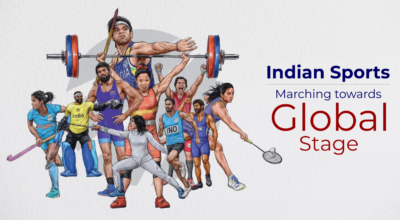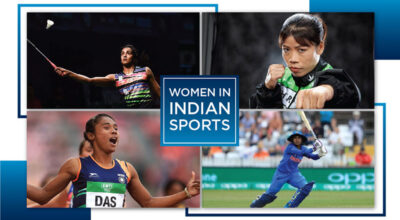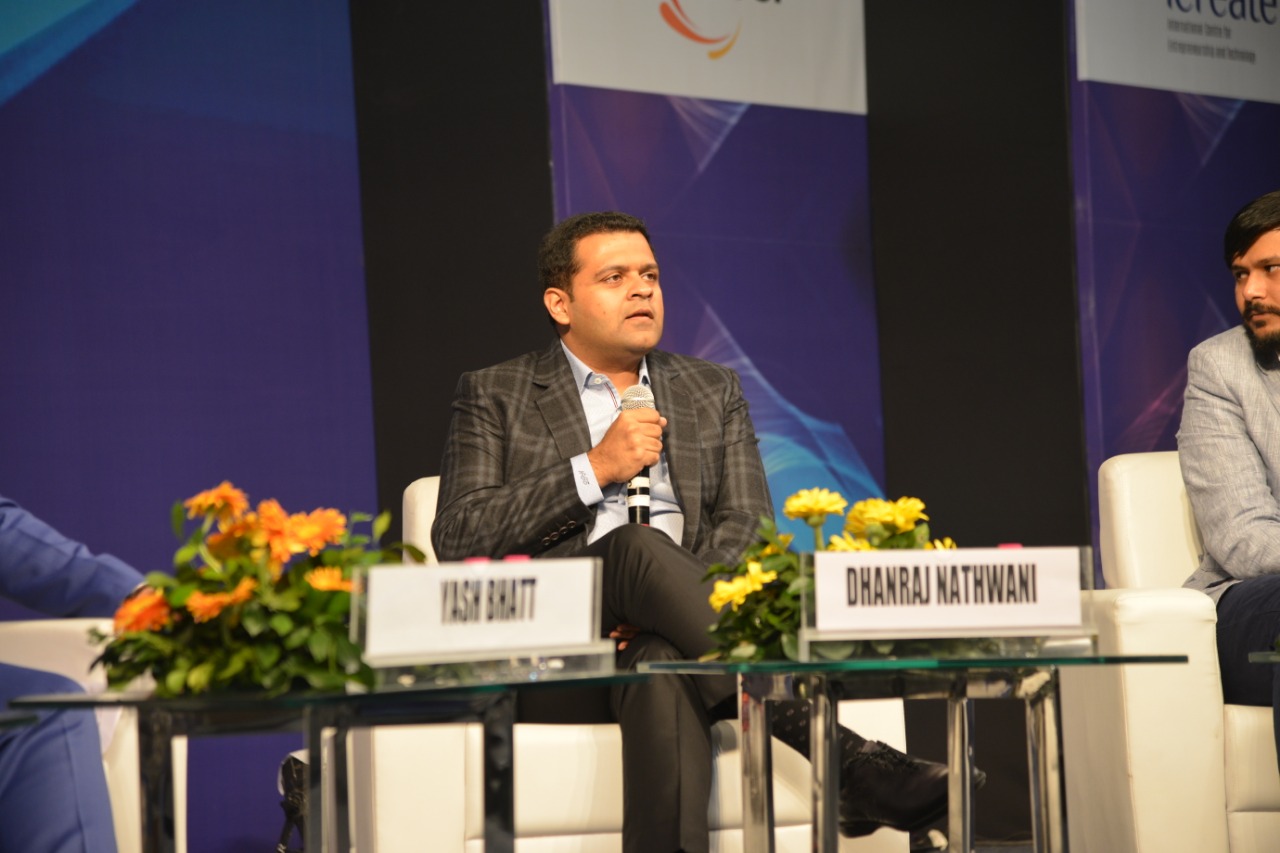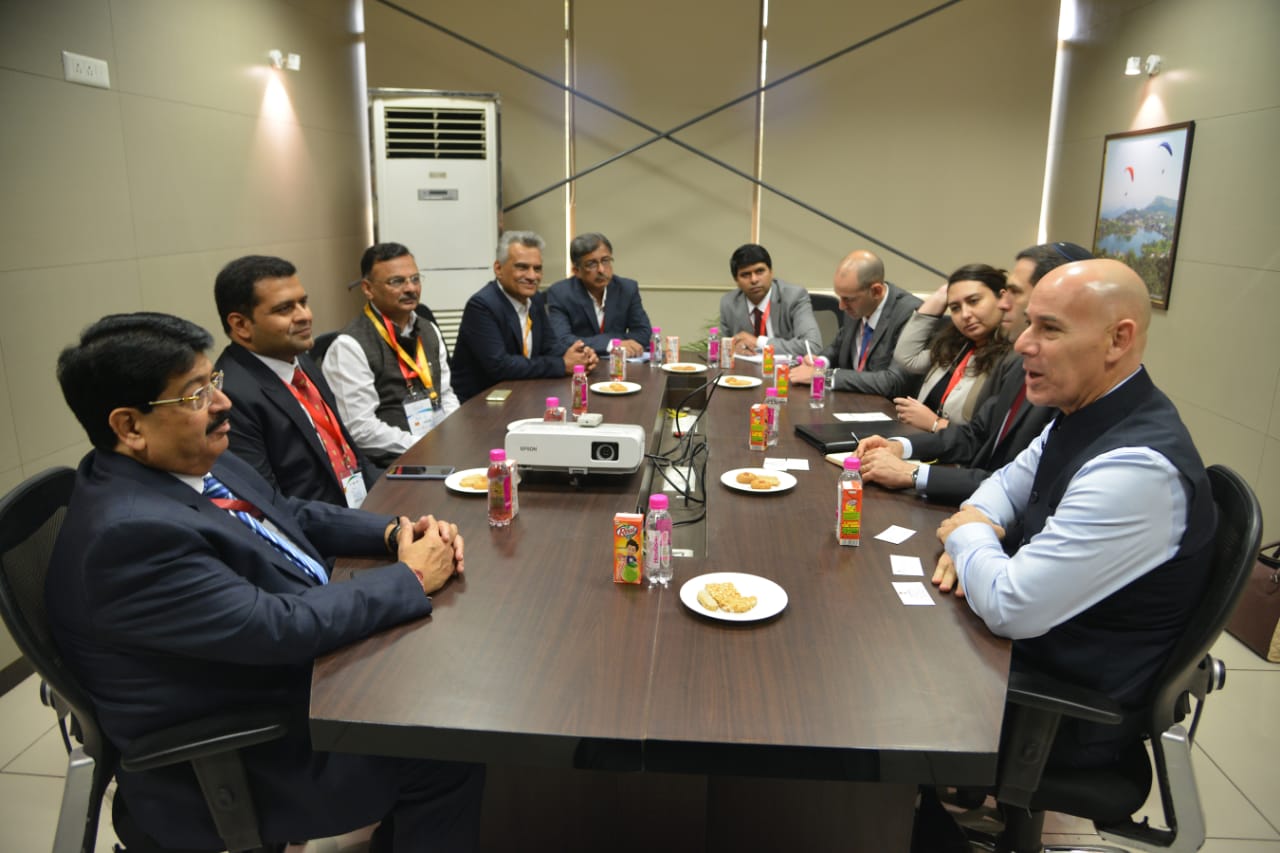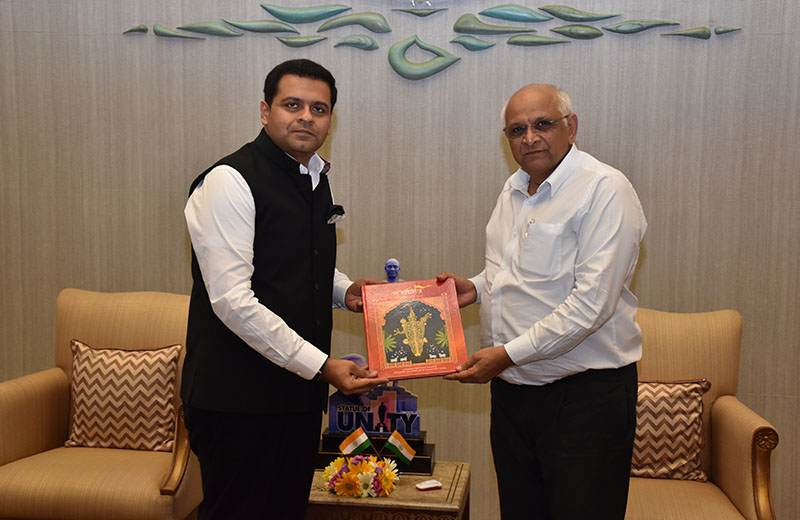
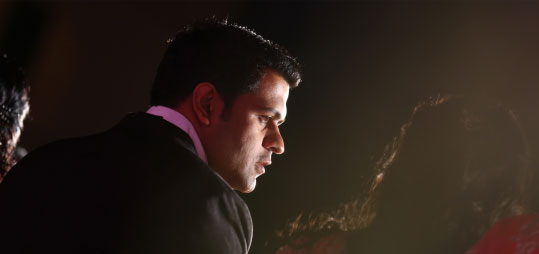
Dhanraj Parimal Nathwani
Perseverance, for me, is the foundational value of success. Indomitable will fuels great achievements and breakthroughs. The transience of life and its rhythms ushers in new challenges, which can be gracefully navigated with the right spirit and sheer grit. The key is to see these hurdles as opportunities to recalibrate and learn.
I remain in great reverence to my roots. I am deeply grateful for the head start I got with my father’s support and guidance. My father, Shri Parimal Nathwani, is the wellspring of my values. With my value system guiding me, my own personal aspirations and goals for growth are clearly in focus. I believe people are multifaceted and business is only one aspect of my life. The motivation to be of service to others drives all the philanthropic work that we do. I find travel exhilarating, and I believe as we travel further out in the world, we come closer to ourselves. Nature is another significant interest—it moves me. My passion for animals stems from the rich wildlife of Gujarat, where I grew up. The list of interests is unending; these add to the prism of my experiences. I keep learning from the world around me on my journey of self- exploration and growth.
BLOG
Future India Talks
Old is Gold: Traditional Medicines Gaining Prominence
Ayurveda and Yoga have been central to the way of life for the people of Bharatvarsha since thousands of years. From the time the British started ruling India, Ayurveda & Yoga gradually gave way to modern allopathy as the focal medical system prevalent across the country. But since last few decades, Yoga especially and Ayurveda to a lesser extent have started gaining popularity in the Western countries. In India while these traditional healing systems continued to be present since Independence, more so in rural areas, a focused major push has been given to age old traditional systems by the Government of India, under the leadership of our Honourable Prime Minister Shri Narendra Modi since 2014.A major milestone for worldwide recognition has been achieved with the laying of the foundation stone of the WHO Global Centre for Traditional Medicine (GCTM) in Jamnagar recently by the Prime Minister of India, in the presence of the Prime Minister of Mauritius Mr. Pravind Kumar Jugnauth and Dr. Tedros Ghebreyesus, Director-General, World Health Organization (WHO). It is of significant importance to note that this GCTM will be the first and only global outpost centre for traditional medicine across the world and will emerge as an international hub of global wellness.It will be a truly global project as 107 WHO member countries to their country specific governmental offices - which means the world will come to India for its leadership in traditional medicine. Even today, in many regions of the world, traditional medicine is still the first line of treatment.Jamnagar was selected for this historic first ever GCTM as historically it has been a centre for Ayurveda studies and research. Jamnagar is home to India’s first and oldest Ayurveda learning institution, namely the Gujarat Ayurved University. This University was founded before Independence, with the solitary purpose of reorganisation of Ayurveda in India by the king of Jamnagar - Jamsaheb. This institution has a long list of renowned Ayurvedic physicians like Zandu Bhattji, Rasa Vaidya Bavabhai Achalji and Vaidya C.P. Shuklaji, amongst others.In the 21st century, unhealthy lifestyle, pollution and environmental toxins have greatly increased the risk of illnesses and diseases. In spite of incredible advances in modern science, technology and allopathic medicine at large, we are unable to provide quality as well as holistic healthcare to all.In 2013, WHO developed and launched ‘WHO Traditional Medicine Strategy 2014–2023’ considering that traditional medicine is an important and often underestimated part of health services. TM has a long history of use in health maintenance and in disease prevention and treatment, particularly for chronic diseases. WHO TM Strategy has two major goals: harnessing the potential contribution of TM to health, wellness and people-centred health care; promoting the safe and effective use of TM by regulating, researching and integrating TM products, practitioners and practice into health systems, where appropriate.Hence a global renaissance has begun. Ayurveda, Yoga and other traditional medicines should aim for their rightful place along with modern medicine as mainstream medicinal systems.
Indian Sports: Marching towards Global Stage
India, being the world's second-largest population and one of the oldest nations in history; always carries a fevered pitch and avid excitement for sports since the Vedic age. If one goes through the pages of the very same epics that the pillars of culture are so proud of holding up in our country, a rich antiquity with intrinsic ties to sport and games emerges.It was a momentous occasion for India when the President of the International Olympic Committee (IOC) recently announced that IOC’s next session in 2023 will be held in India. After 4 decades India will be hosting a session of the IOC. After being confined to cricket & hockey for long, India is now making its presence felt in various other team & individual sports too at the global stage. India’s aspiration for sports in the global arena has today risen to a level where it is now confident of bidding for hosting the Olympics Games in future.Sports not only ensure a healthy lifestyle, but also inculcate the Olympic Values of Excellence, Friendship & Respect. With nearly half of India’s population being under the age of 25 years, it is imperative to get them to participate in sporting activities and develop a healthy lifestyle. As highlighted by Smt. Nita Ambani, IOC member, “India is one of the most crucial and exciting places to nurture and growth the Olympic Movement”.In spite of having the world’s second largest population, India has fared poorly on the global sports arena since Independence. One of the fundamental reasons for this was that for long sports was never taken seriously by parents as well as educational institutions, and their focus was on getting children to excel at their studies and not waste time and energy on sports. But, over the last decade or more a perceptible change has taken place and there is a significant increase in pursuing sporting activities amongst all sections of the country’s people.Under the visionary leadership of our Honourable Prime Minister of India, Shri Narendra Modi the approach at looking to the sports has drastically changed.He has given special importance to development of sports across the country and undertaken various initiatives to promote sporting activities from the grass-root level. Khelo India Scheme, Fit India Movement, Sports Talent Search Portal, Target Olympic Podium Scheme, Empowered Steering Committee on Sports, and Sports & Games for Persons with Disabilities Scheme are various initiatives taken by him which have given a major impetus to sports across the country.In the Asian Games in 2018 held in Indonesia, India recorded its highest every medal tally by winning a total of 70 medals – 16 gold, 24 silver and 30 bronze. Thereafter, at the Tokyo Olympics, India again achieved the distinction of its highest ever tally with 7 medals – 1 gold, 2 silver and 4 bronze. Neeraj Chopra’s gold medal in javelin has come as a big inspiration to the Indian youth. The last time India won a gold medal at the Olympics was way back in 2008 by Abhinav Bindra. Mirabai Chanu, Ravi Kumar Dahiya, PV Sindhu, Lovlina Borgohai and Bajrang Punia were the other individual medal winners along with the Indian men’s hockey team which won a medal at the Olympics after a very long time.The Union Budget, presented recently by Finance Minister Smt. Nirmala Sitharaman has an increase of over Rs 300 crore in sports allocations from previous year. Lately, The Sports Authority of India (SAI) and the Ministry of Youth Affairs and Sports (MYAS) have appointed 398 coaches at various levels in 21 disciplines. The decision was made keeping in mind the Paris Olympics in 2024 and the Los Angeles Olympics in 2028.The Khelo India programme of the Government of India has been introduced to revive the sports culture in India at the grass-root level by building a strong framework for all sports played in our country and establish India as a great sporting nation. Apart from the central and state government initiatives, a lot of support for development of various sports is coming from the private sector too.Built on the very successful IPL model, the Pro Kabbadi League and the Indian Super League (ISL) for football have been two great success stories. Smt. Nita Ambani, Chairperson of Reliance Foundation and the first Indian woman to be elected a member of the International Olympics Committee (IOC), has been focusing on revolutionising school and college sports in India so as to provide a platform to student athletes to build a career in sports. Since inception, Reliance Foundation’s sporting initiatives have reached 2.15 crore youngsters across the country.India has already emerged as major economic and military power in the world and is now well on its way to becoming a force to reckon with in the global sports arena. Through ‘Khelo India’ we will see the emergence of a ‘Fitter India’.
New India: Marching towards a ‘Green Revolution’
Climate change has emerged as the greatest threat to humanity today and it is expected to wreak further havoc on the planet for future generations. All stakeholders around the globe are looking at ways to curb this menace as it affects the planet’s health and well-being due to extreme weather events like changing rainfall, rising sea levels, extreme heat patterns, famines, water scarcity, distressed agriculture harvest, etc.The 26th UN Climate Change Conference of the Parties (COP26) in Glasgow has set the following goals:
- Secure global net-zero by mid-century and keep 1.5 degrees within reach
- Adapt to protect communities and natural habitats
- Mobilise finance
- Work together to deliver
‘Fire Prepared’ – Stepping into 2020
We are stepping into a new year and I have always believed that the best way to do it is by planning for the best and being prepared for the worst. 2019 was a year of many events, incidents, achievements and few disasters. On one side the country took pride in being homeland to another Nobel Laurette, on the other hand smokes of fire in Surat and Delhi ‘greyed’ the blue skies. While it is always nice to carry the memory of the good, it is very important to step ahead with the learnings from the worst.In the recent past, several Indian cities have experienced disastrous fire incidents that have claimed many lives. Out of the many in 2019 alone, the deadliest such incident claimed 66 lives! The fire that engulfed a coaching center in Surat claimed 23 young lives. In Delhi at least 43 people died and more than 50 were injured in the fire that occurred at a factory building in Anaj Mandi. In both cases, the fire started due to short circuits and the precarious condition of the buildings then exacerbated the situation.The often-occurring fire incidents across the country are a grim reminder of our repeated failures and perpetual state of unpreparedness when it comes to mitigating disasters. It is true that a fire cannot be predicted. But, if we have proper fire protection measures and equipment in place, then we can prevent loss of lives, serious injuries as well as severe damage to the property.We have lost far too many lives by not being prepared or properly trained. Lives have also been lost due to illegal constructions that the authorities have somehow missed or intentionally overlooked.Fire SafetyAssessing the fire safety standards of an organisation or residence is an important exercise which can be accomplished by a fire safety audit, which evaluates a building for compliance with the National Building Code of India, as well as relevant Indian standards and the legislation enacted by State governments and local bodies, on fire prevention, protection and life safety measures. Municipal corporations and local bodies are responsible for providing fire services and enforcing fire safety norms. But, due to lack of resources many such services are ill equipped to provide sufficient fire safety cover.FICCI-Pinkerton’s India Risk Survey of 2018 drew attention to the “under-equipped fire services in the country.” A study sponsored by the Union ministry of home affairs in the same year came to a similar conclusion. It found that out of the 8,550 fire stations that are needed in the country, a little more than 2,000 are in place, which is a shortage of about 65 per cent. According to the report, urban areas alone require an additional 4,200 fire stations just to meet the minimum standard for response time. The report has outlined the sad state of fire-fighting infrastructure in India and unless the shortfall is addressed, cities in India will continue to remain live tinderboxes waiting for a spark.According to the ministry of home affairs, there is a large deficiency of fire-fighting infrastructure in 144 towns with population over 1 lakh each. Although the government in 2009-13 had given financial assistance of Rs 176 crore to streamline the fire services and supplement the modernisation efforts across states, it now seems apparent that either the funding was poorly utilised or was not enough in the first place.Other than maintaining a proper fire-fighting infrastructure and having a proper budget to do so, another important aspect lies in building consciousness among citizens about fire safety and prevention.One simple way of spreading awareness would be to have periodic fire safety workshops in localities, schools, and workplaces with active participation from locally elected representatives. There are many offices or high-rise buildings that have expensive and advanced fire-fighting mechanisms but hardly any person has been trained to use them. Furthermore, lack of regular maintenance of such equipment, which might be a result of insufficient knowledge, adversely affects its functionality at time of a fire.Unless fire safety is taken seriously by authorities and citizens alike, such incidents are bound to recur more frequently. Citizens need to take an active interest in learning about fire safety and prevention, while fire safety departments need to enforce safety audits periodically and then subsequently act against erring establishments.
Towards Clean Air: Celebrating the Innovative Indian
It is now well established that the declining air quality in India poses a substantial health risk to the country’s population. The past few weeks have especially been eye-opening, as a thick curtain of smog settled on cities in North India. And as the winter months approach, the air is only expected to become worse, as a dip in wind speed and temperature makes the air colder and denser, leading to accumulation of pollutants. In light of the current public health emergency, it is important we pause as a community to consider the causes and solutions to the dangerously high levels of pollution surrounding us.
One of the major challenges of air pollution is that there are many different factors that contribute to its rising levels. Vehicular emissions, crop burning, dust generated from construction sites, poor waste management, burning of fossil fuels, all play a role. In fact, while much of our discussions revolve around tackling the pollution at the city level, many of the root causes are actually emerging from surrounding rural areas. Indeed, many parts of rural India battle what have been recorded as the worst air pollution levels worldwide, as cultural and age-old practices continue to contribute to the toxic air. Further, urban and rural politicians often clash on what they believe will be the best way forward.
But on the bright side, the air pollution emergency has also shown the spirit of innovation present in our country. For example, there are now microwaves available to treat infectious waste and eliminate air emissions, including toxic POPs (Persistent Organic Pollutants) – harmful chemicals that are detrimental to our health. A Delhi based company, Chakr Innovation is doing their part to curb air pollution by designing the first retro-fit emission control device for diesel generators in the world. It captures as much as 90% of particulate matter emissions from the exhaust air without reducing energy efficiency, and the soot captured is then converted into inks and paints! Now that’s called jugaad!
Inspired by India’s energy crisis and the sheer demand for fans in the market, two IIT Bombay graduates sought to transform the product to make it far more energy efficient. The result is the Gorilla fan by Atomberg Technologies, which consume just 28 watts at full speed. Because of the low-power consumption, these fans run three times longer on an inverter (very important for people living in places where load-shedding is common).
Indeed, from making diesel generators to ceiling fans, there is no dearth of innovative startups seeking a cleaner, more sustainable future. But, in order to gain widespread recognition, these startups will need a stable eco-system of support and encouragement, from consumers, mentors, educational institutions and even government resources. As the government itself begins to prioritize energy-efficient practices, for instance through the Cap and Trade initiative launched recently in Gujarat, this will be a logical next step.
And as consumers, we have a responsibility to make conscious, intelligent choices. Our choices in our day to day lives— from electricity, transportation, to waste management - can all play a major role in managing pollution levels. Every little bit can make a difference, and the time for action is now.
Women in Indian Sports: Levelling the Playing Field
In India, sports and physical activity have historically been considered masculine activities, while girls are usually considered better suited for the kitchen. The examples of women in sport like Mary Kom, the only woman boxer to have won a medal in each one of the first seven World Championships, and PV Sindhu, a badminton champion who was also the first female Indian athlete to win an individual silver medal at the Olympics, are anomalies for a culture that is beset with societal barriers and gender prejudices. There are other icons like Mithali Raj, Hima Das, Harmanpreet Kaur and Vinesh Phogat, to name a few - they have all overcome many challenges to shine bright in their respective sports.
But slowly, things are changing. Increasingly so, girls are being encouraged to play sports. The Indian sports industry is at an inflexion point. The sports sector in India has seen many new, exciting developments in recent years, including the establishment of new leagues in sports like football, kabaddi and hockey, increasing online consumption of sports and the creation of fan clubs. It is important that we create a culture wherein women feel included in sports, not only to challenge patriarchal norms, but also to engage half the population in a rapidly growing sector of the world.
In some ways, this project is already underway. Small outfits across the country, such as the Jude Felix Hockey Academy in Bengaluru and the Saksham Sports Club in Delhi encourage school girls to play even in the face of societal, financial and logistical challenges. The government has recently launched a new initiative, the Khelo India Girls League, aimed at identifying talent right at the grassroots level. The league will begin with football, and this will hopefully help to identify and groom talent ahead of the U-17 women’s football world cup next year.
Efforts like this, by the private sector as well as the government itself, contribute towards building a sustainable and strong sports ecosystem, the benefits of which will diffuse across all segments of the Indian society. Culturally speaking, movies like Dangal and Chak De India also offer a flicker of hope for aspiring sportswomen and depict a society where women can play sports.
Indeed, there are certainly many positives to celebrate. At the 2018 Commonwealth Games, 46% of the athletes were women, and almost 42% of the medals won were by women. At just 19 years old, track and field extraordinaire Hima Das can brag of being the first Indian to bag four gold medals in four days.
We have miles to go before we can reverse decades of gender imbalance, but the future is certainly looking bright for participation by females in Indian sports.


